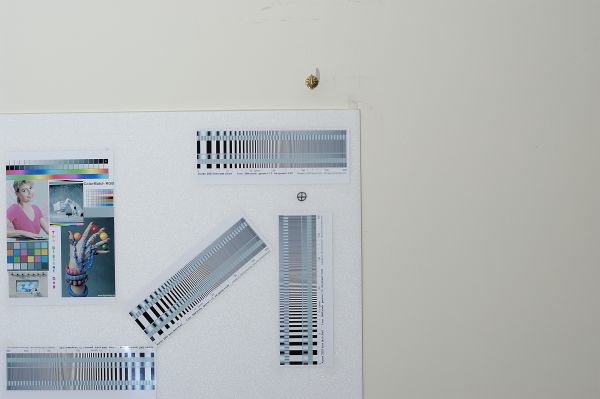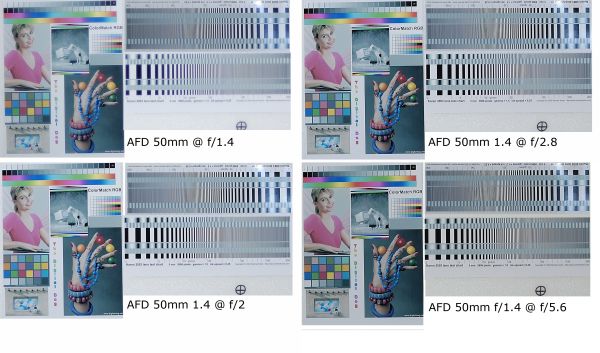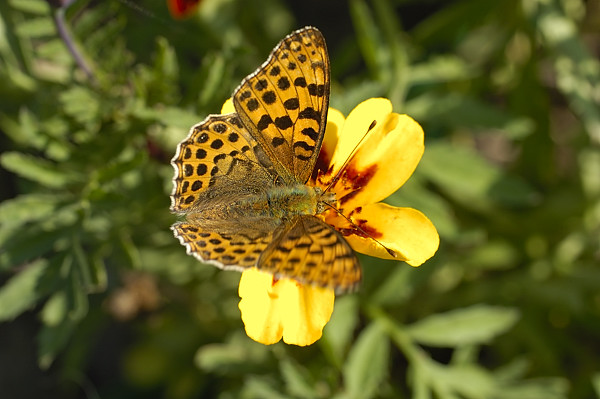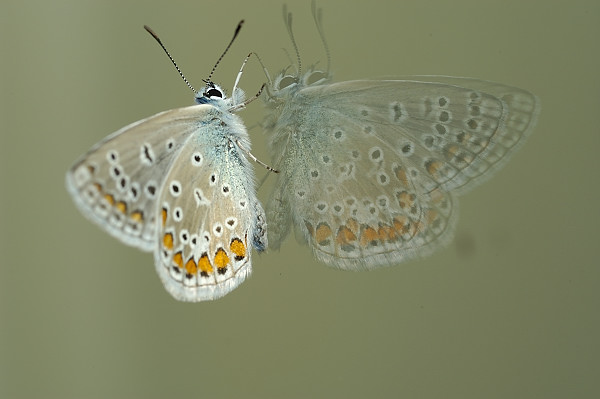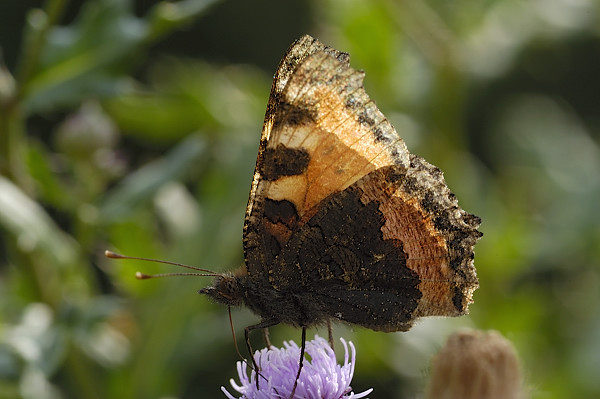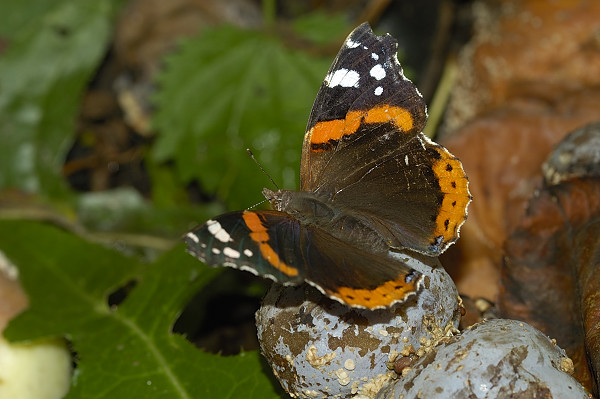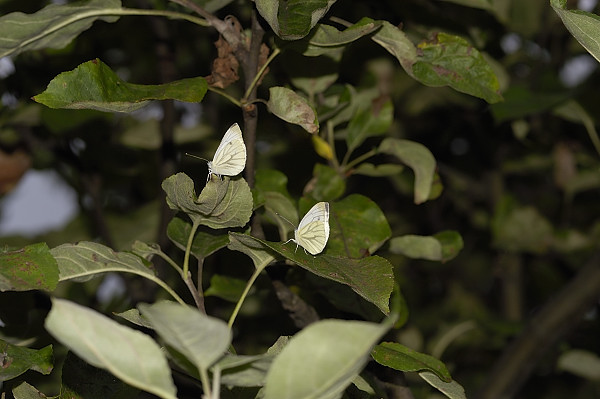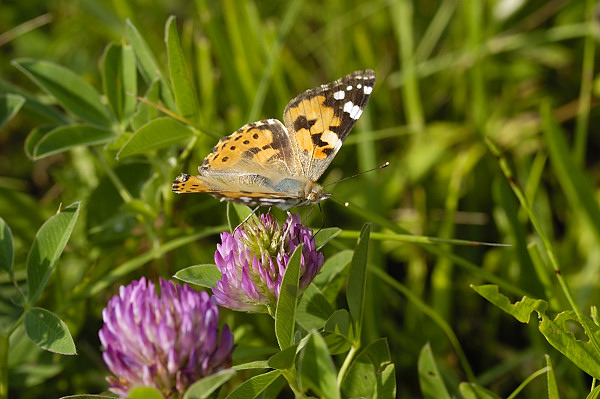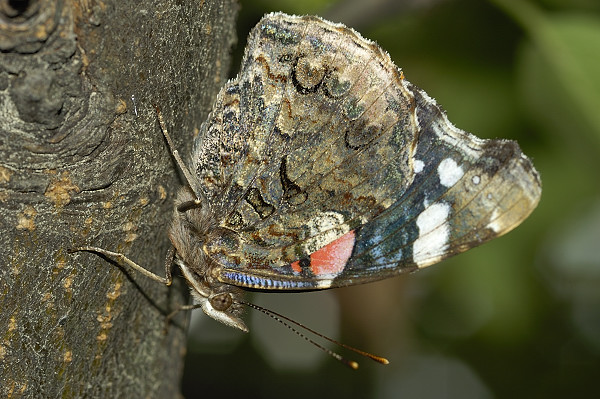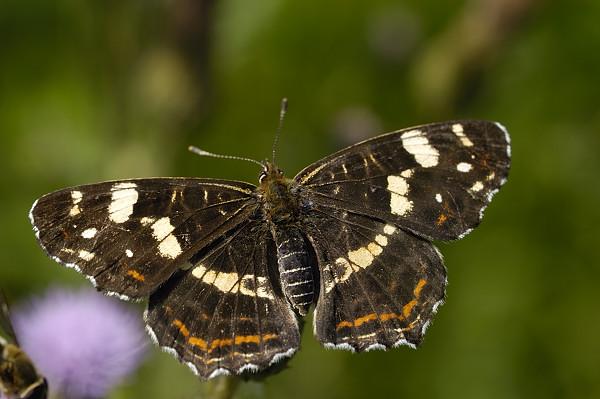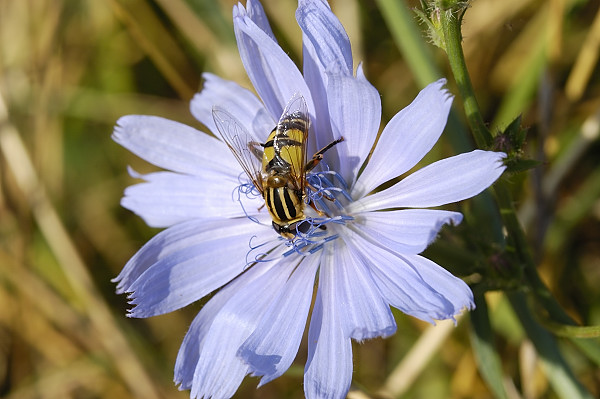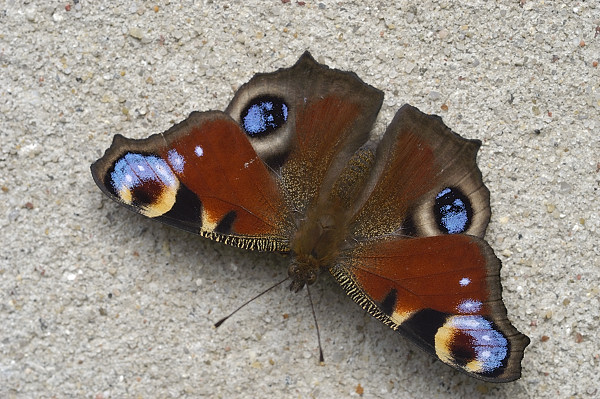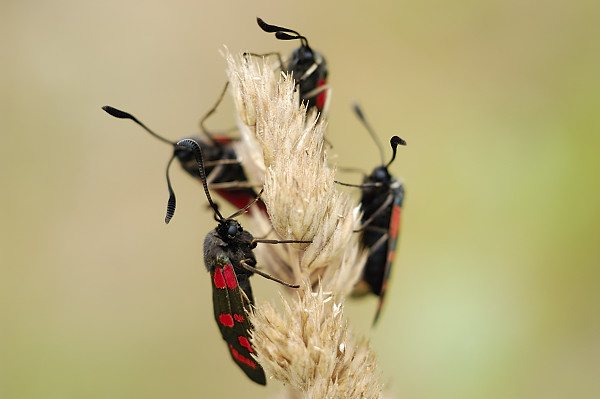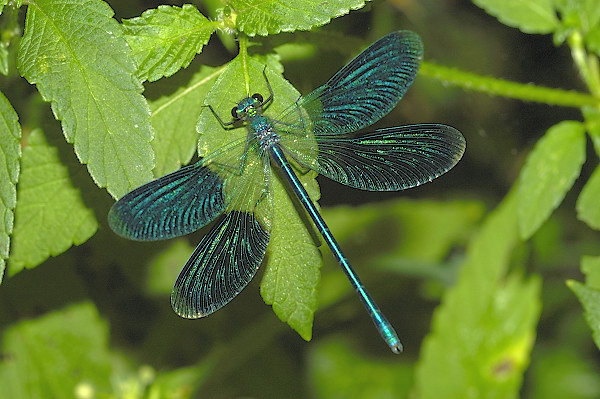Just a bit of fun to end the Christmas holiday with. Just playing around.
Just recently bought a new Nikon 50mm f/1.4 D and, since I had to agonise over whether to get the 1.8 or the 1.4 (which costs twice the price for 2/3 of a stop more) I thought I’d try to evaluate it in some objective way, and test some of my other lenses while I’m at it.
So I found and printed off a resolution test target from here and also a color test chart. I mounted these onto a piece of 6mm depron such that, with the X with a circle round it was at the center of view and focal point. So the target spans from center to corner of the frame. This allows testing all the way to the edge. This is what the whole shot looks like…
As you can see, the colour image was at the edge of the frame.
All lenses were set at 50mm apart from the 55mm prime 😛 All filters were removed. Exposure was with flashgun (on manual) to ensure reasonable consistency. I’m interested in sharpness across the frame, rather than perfect exposure here.
Other lenses tested in the series were…
- Nikkor 35-80mm 1:4-5.6 AFD
- AF-S Nikkor 18-55mm 1:3.5-5.6G ED
- Micro Nikkor 55mm f/3.5 AI (manual focus)
The target was photographed from 2.55 m, which is the ideal distance for this design of target with a 50mm (read up on the target link above if you want all the geeky details – it’s a bit beyond me to be honest. I just wanted to see how good my new lens is compared to the others I have and compared to itself at different apertures). The camera was on a tripod and lenses were focussed on the circle with a cross in it. A range of apertures were used, but since the largest that they all have is f/5.6, this was used for the comparison.
So onto the results. I have cut and pasted the colour chart, the bottom left resolution chart and the central resolution chart from each lens test.
Looking at the sharpness at the edge, not surprisingly the two primes, both of which are pro-spec lenses, have excellent sharpness all the way to the edge. Both the zooms (which were both “kit lenses”) are a bit soft and woolly at the edges. Obviously the 55mm lens made the picture a little bit bigger due to 5mm extra focal length – that’s why the colour section was cropped.
As for the AFD 1.4 itself, here is the comparison of various apertures…
Looking carefully, you can see it’s a bit soft wide open, much better by f/2, but by the time you get to f/2.8 it’s great. However, its softness wide open is only “poor” compared to its own performance. If you compare it with the two zooms, it’s not that bad. Since I bought it for available (low) light portraits, I think the soft-focus feel may even be an advantage. I probably still would have preferred if it had been razor sharp wide open because you can always soften in post processing, but expecting sharpness at f/1.4 may be unrealistic. Still. job done. I think this lens is a keeper. 😀 Good job too as it’s my Christmas present from the family. :present:
Just back from Perkowo from a short stay by the lake. I noticed what I thought was a new species (to me) of butterfly. So I merrily clicked away. Didn’t take a computer, so it wasn’t until this afternoon, when we got back, that I realised for sure that it was actually two species. Both are fritillaries and they do both look similar-ish – although even on my 1 inch camera screen I could see there was a difference in wing shape. I only got one three minute opportunity with the Cranberry fritillary. The shots are not as sharp as I would like, but they’re enough for a positive ID. The Cranberry fritillary is on the list of protected species in Poland. The place we were staying is in a national park area.
After we came back from Krakow, Tomek and I went along to a local grassland area on the edge of the forest. We went there because we knew there were loads of Burnett moths. We took a few containers with us, but one of the coolest things we saw was a teeny blue butterfly. There were actually a couple of them, but we managed to sneak up on one after a couple of attempts and catch it in a container. So we took it home, fed it some sugar water and kept it inside for a couple of days, photographed it and released it. This one behaved very much like the speckled wood back at Eastertime and each time it was released from the box it went for the window.
So here’s a few shots of it. Bear in mind that it’s tiny. Wing span is about 15mm (3/5 inch). I’ve included the reflection shot because my dad likes reflections. Would have been better without double glazing though. 😥
Having been unable to get a good straight-on shot of a tortosieshell here in Poland, have a look at the underside instead.
Not been much of note because I seem to have “nabbed†half-reasonable shots of most of the local native species. Two which have proven to be fairly elusive so far this year have been the Red admiral and the Cabbage white. The local Reds seem to not allow humans within 15 feet unless they’re feeding (the Reds, not the humans that is). And Cabbage whites are just so restless that they never seem to sit still long enough even for autofocus to work, let alone manual.
Remember I did manage to nab an underneath shot of a Red admiral before we went to Krakow. That one appeared very young and small. I think it grew a bit now and I managed to get another shot of it in the rotten fruit patch.
There’s another, larger one, that likes to hang out in the sunny corners of the garden. I managed to sneak up on that one as well today.
You can see the two are not the same one because the wing damage is different on each.
And just after doing that, I saw a couple of flashes of white on the apple tree. Two Cabbage whites courting, by the look of it. Well I managed three shots before I scared them off. 😀
I’ve also got a Common blue and a couple of interesting views of a small tortoiseshell to come. These were shote a few days ago but I’ve been trying to focus on other things this week. (Pun intended).
I’m still after a good topside photo of the European Map, but a sharp, close, open-winged, straight on shot so far eludes me. 😥 Although I’ve got plenty of shots, they are all slightly lacking in some way. But in my pursuit of this today, I happened across my first Painted Lady of the year (in Zgierz).
Rather battered (looks as if it has escaped being eaten by a bird – or maybe the result of migration?) But even with a significant chunk of wing missing, this one appeared to be in total control of its flight ability.
As is normal for painted ladies, this one was quite tricky to get close to, but fortunately was very keen to feed on these flowers, so didn’t go far away when spooked. And when it realised I wasn’t after a butterfly sandwich for breakfast, it let me get quite close. :yes:
Having seen endless peacocks, speckled woods, ringlets, cabbage whites, and meadow browns in the garden in Zgierz (I even saw what looked like a swallowtail fying quite high up one day 😎 ), today marked the first sighting of a Red Admiral. They like cherries. This one was first seen heading for the cherry tree, where I soon scared it by getting too close. After that (s)he headed over to the compost area to find some rotting apples which fell off the tree. But the closest shot I got was after eating some apple, it headed into a tree to roost at about a foot above my head height and upside down. Light was bad, so I used the pop-up onboard flash. Unusual angle, but good facial and outside wing detail – and we’ve all seen Red Admirals before anyway. 😉
And this moth was seen in the woods on the way back from a session at the lake yesterday evening. No idea what it is.
I popped to my “target rich environment” for an hour this morning and got a better shot of the topside of the European Map (Araschnia levana, prorsa). Still not brilliantly sharp, but again it was rather windy, so a bit hard to focus. At least you can see the markings.
Also caught another species I hadn’t got before. This one is a Ringlet – Aphantophus hyperantus.
And there was also a kind of hoverfly on a flower that didn’t object too strongly to having its portrait done.
Just popped my head out the door this morning to be confronted with this on the wall. So I ran back in for the camera and clicked off a few “rounds”. Quite laid back, allowed me close enough so that this was full frame with Sigma 105mm.
Call me boring, but I prefer my butterflies the right way up. But beggars can’t be choosers. 😀
Not expecting much of anything else today as we spent most of the day in the car to Kepno and back.
One of the areas I scouted out last week has thousands of Burnet moths. I went through there today and took loads of shots, but it was too dark and too windy to get much of anything really good. So I will have to go back on a brighter day. This one is included just for fun, not for photographic merit…
Then I went down to the lake and it was dismal there too, but I found the damselflies and one male in particular let me get really close. These were with on-camera flash though so not as natural looking as I like…
